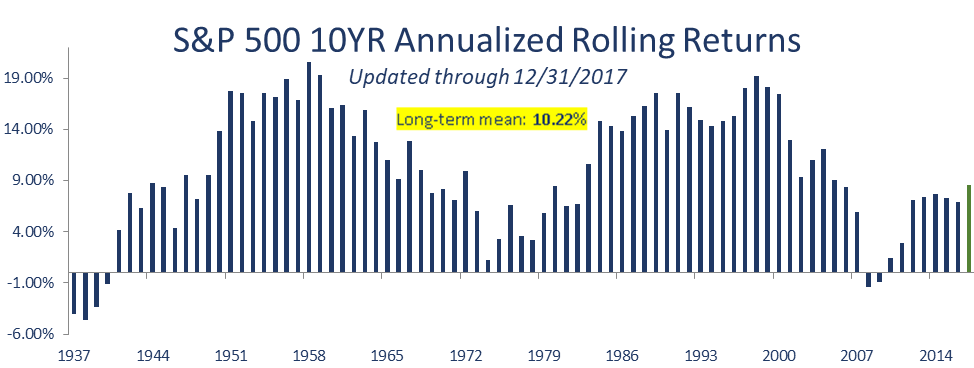MichealKnight
Full time employment: Posting here.
- Joined
- May 2, 2019
- Messages
- 520
Ladies, Gents, Conservatives, Liberals, Vegetarians, Libertarians and all the ships at sea........
I'm going to ask this crystal ball question, but preface it with a few pleas:
*FireCALC: Yes, aware of it, have played with it.
*Market Timing - fully agree, not always possible.
So hoping for actual guesses....or basic opinions - free of our feelings on market timing or our devotion to firecalc.
Really hoping for people's opinions...no different than picking a stock, or making a sports prediction.
For a 7-10 year outlook..... and a 60/40 portfolio.... what do you feel is a realistic years return. NOMINAL return.
The reason I ask... if I early retire in 2020.... the nominal returns I'm hoping for hover around 5.25%-5.5%.
I look at the popular VWINX (Wellesley)....and of course the last 40+ years shows a nice 9% return. Many states seem to depend on 8% returns for their pensions. So when I see those numbers, I feel that my 5.5% desire is almost 40% LESS than people are used to in recent decades. Frankly I wonder what a 40% drop in investment income would mean for the nation and world but I digress.
Bottom line: is 5.5% (NOMINAL). wishful pie in sky thinking? Is it a slam dunk? Is it sort of realistic? Would really appreciate your guesses or opinions on this...and specifically, what you feel a 60/40 portfolio might return over the next 7-10 years.
Thanks for reading.
I'm going to ask this crystal ball question, but preface it with a few pleas:
*FireCALC: Yes, aware of it, have played with it.
*Market Timing - fully agree, not always possible.
So hoping for actual guesses....or basic opinions - free of our feelings on market timing or our devotion to firecalc.
Really hoping for people's opinions...no different than picking a stock, or making a sports prediction.
For a 7-10 year outlook..... and a 60/40 portfolio.... what do you feel is a realistic years return. NOMINAL return.
The reason I ask... if I early retire in 2020.... the nominal returns I'm hoping for hover around 5.25%-5.5%.
I look at the popular VWINX (Wellesley)....and of course the last 40+ years shows a nice 9% return. Many states seem to depend on 8% returns for their pensions. So when I see those numbers, I feel that my 5.5% desire is almost 40% LESS than people are used to in recent decades. Frankly I wonder what a 40% drop in investment income would mean for the nation and world but I digress.
Bottom line: is 5.5% (NOMINAL). wishful pie in sky thinking? Is it a slam dunk? Is it sort of realistic? Would really appreciate your guesses or opinions on this...and specifically, what you feel a 60/40 portfolio might return over the next 7-10 years.
Thanks for reading.


